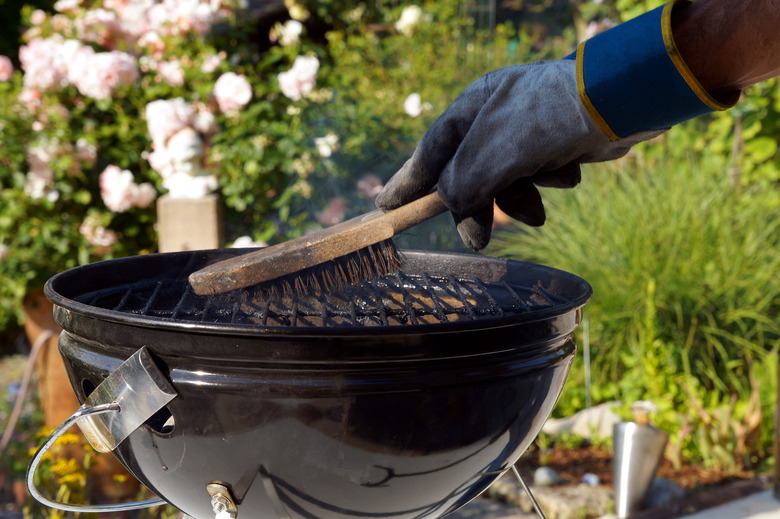Should You Paint The Inside Of A Barbecue Grill?
We may receive a commission on purchases made from links.
At its simplest, barbecuing is a nod to the earliest of human innovations: cooking over fire. Despite all the innovations in the modern kitchen, something about a meal cooked over flames pushes all the right primal buttons. But barbecues get pretty grungy — so much so that some folks want to make over a grill's interior. For some, the urge to make the world a prettier place can be strong, but for those itching to fix the barbecue's interior with a fresh coat of paint, don't do it because it's a bad idea.
Tip
Paints are more durable than ever, but that's thanks to complex chemicals and often-toxic additives — things you really don't want super-heated with foods you're consuming. Never, ever paint the inside of grills — only paint barbecue exteriors, even with high-heat paints.
In Praise of Paint
In Praise of Paint
For some DIY types, being surrounded by paint chips at the paint shop is like being awash in potential and creativity. Today's paint is nothing like the paint of old. Scientists have devised chemical compounds that make colors brighter, more varied, tougher, and longer-lasting than ever.
Automotive paints in particular are a scientific marvel. Designed to withstand every weather that hits the vehicle and an extreme range of temperatures, including long-running hot engines, automotive paints are sometimes suggested as an option for painting an ugly grill's interior. But there's a big difference between automotive paint in the container and the application of automotive paint.
As an at-home DIYer, you probably can't replicate the powder-coating processes at work in a car factory. Even if you could, it's still a bad idea for the inside of your grill. Painting the outside of your grill is another matter entirely, as black high-heat paint for barbecues is common, but it's intended for exteriors only. Grills themselves should be kept well seasoned to avoid rust, which is not just a cosmetic concern.
VOCs Don’t Make for Good Eating
VOCs Don't Make for Good Eating
When you buy paints, you're always recommended to find low-VOC paints, with VOC standing for "volatile organic compounds." Volatile organic compounds, low or not, are not the secret sauce your burger's been looking for. No matter how you look at it, commercial paints are not designed to be super-heated past 400 degrees Fahrenheit while cooking food in their midst.
When you see cooking shows using "smoking guns" to put flavor into food, you can imagine why painted grills off-gassing into your food is a bad thing. If smoke can permeate foods, then volatile organic compounds absolutely can too. When smoke gets inside your food, it's tasty. But with paint designed to make a $90,000 car look fantastic for decades, the toxic compounds at work in commercial paint, including water-based ones, make painting your grill far too unsafe.
Rust is common in grills and smokers, and rust can usually be scoured out. If it remains problematic, get a new grill but never paint the inside. Modern grills are often ceramic-coated; they might blacken from char and soot but often clean up well with a little hard work.
